Help Desk Management: A Guide to Enhance Support Operations
Companies are leveraging service desk management to deliver customer support like never before. A help desk management software is all you need to elevate your support!
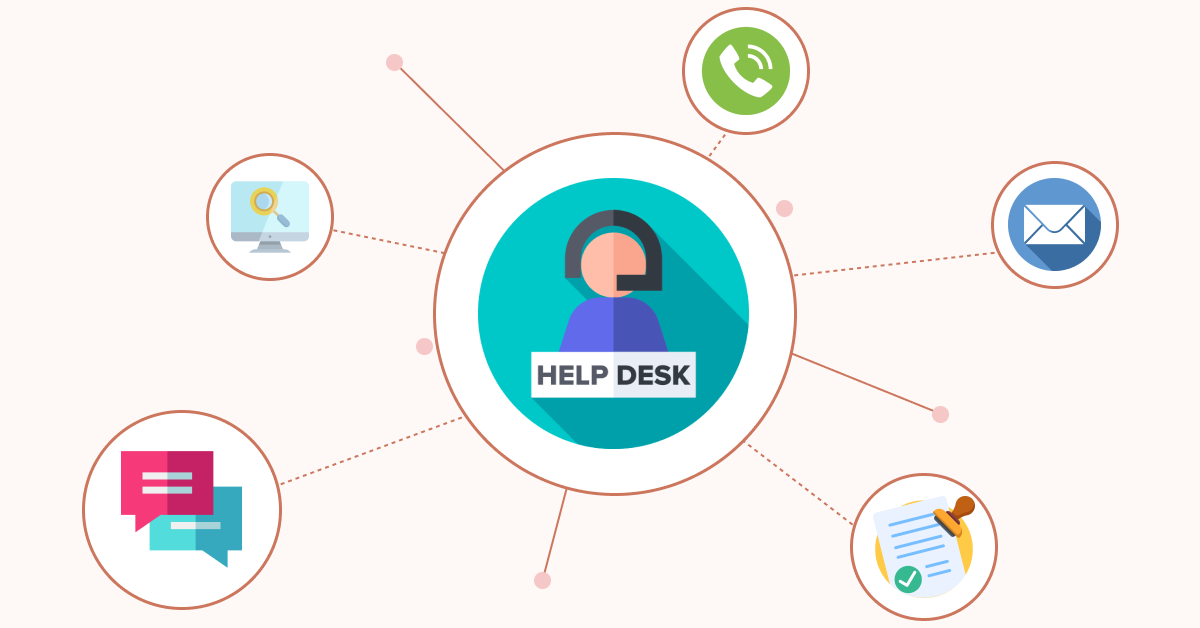
Companies are leveraging service desk management to deliver customer support like never before. A help desk management software is all you need to elevate your support!

Help desk management, or service desk management, is essential to successful business operations. With a well-managed help desk system, businesses can enhance their customer experience by ensuring the timely resolution of issues without overburdening their internal resources.
No wonder more than 86% of the customer service teams say having a help desk system improved their productivity levels. No matter your business’s size or industry, getting automated help desk solutions is the need of the hour.
In this comprehensive guide, we’ll go through the basics of the help desk system and the best practices for its successful implementation. Yes, we’ll cover everything you are looking for! So, let’s dive in!
Help desk management is defined as the systematic approach to organizing, implementing and overseeing IT support services within an organization. It involves coordinating people, processes and technology to provide efficient technical assistance along with problem resolution to end-users.
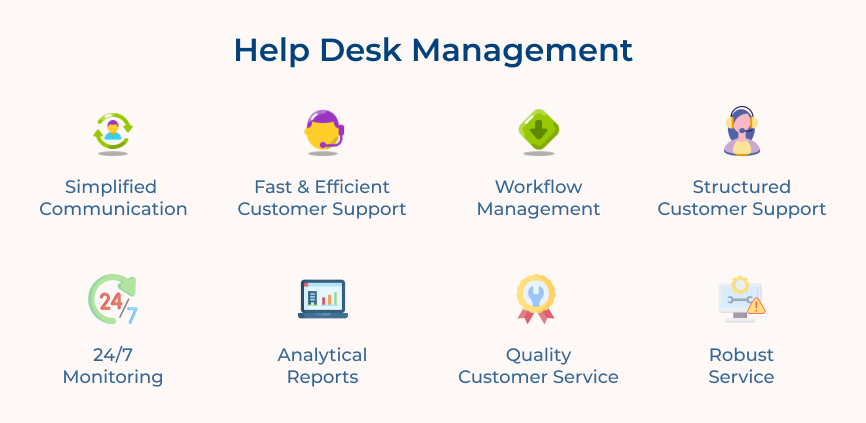
The importance of service desk management cannot be overstated in the modern business space. It serves as the primary point of contact between users and IT services, ensuring business continuity by minimizing downtime. An effective help desk builds user confidence, reduces operational costs and provides valuable insights into recurring issues that can inform strategic IT decisions.
Key objectives:
If you’re ready to take your help desk capabilities to the next level, let’s go through the key features of help desk management systems.
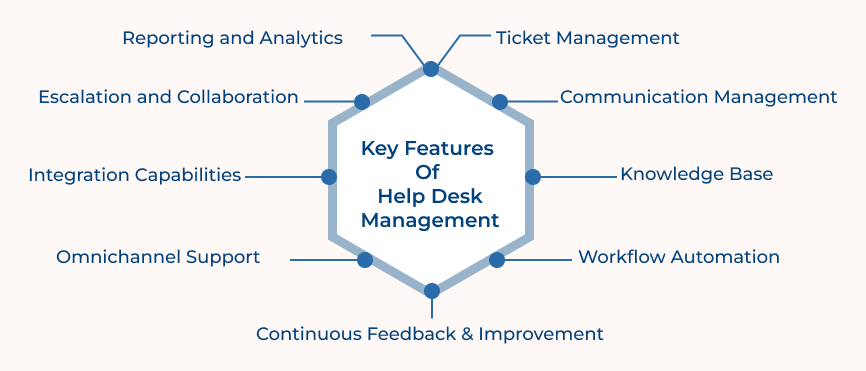
Implementing a robust ticketing system is essential for help desk management. This system streamlines handling customer inquiries and requests by centralizing support requests. The support agents can easily track and prioritize tickets, ensuring no requests go unnoticed or unresolved.
A well-organized approach allows for effective management of customer issues, as trends requiring attention can be identified and addressed promptly. The ticketing system also enables the help desk team to monitor response times, ensuring that customer issues are resolved in a timely manner, thus enhancing customer satisfaction.
Effective communication lies at the core of a successful help desk. To cater to the diverse preferences of customers, help desk management tools offer multiple support channels such as email, live chat, and phone support. It allows customers to choose their preferred method of engaging with the help desk agents.
Prompt updates about their requests and inquiries keep customers reassured about the progress of their issues. Let’s say a customer chooses to communicate via live chat. Here, they can receive real-time responses from the support agent, facilitating quick issue resolution and enhancing the overall customer experience.
A comprehensive and up-to-date knowledge base is vital for help desk management tools. It is a depository of resources – articles, FAQs, troubleshooting guides, and best practices. The knowledge base empowers support agents by providing quick access to accurate information, enabling them to resolve customer issues promptly and efficiently.
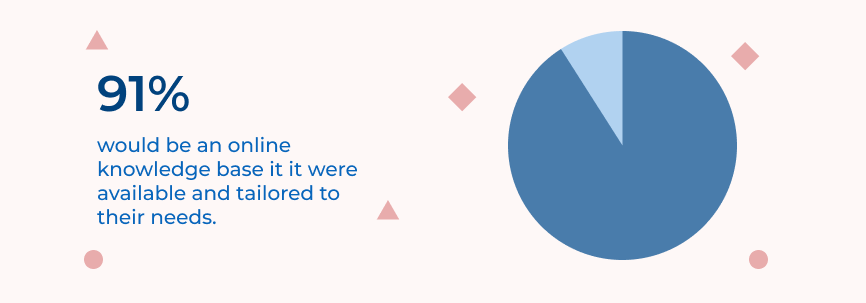
For instance, if a support agent encounters an issue, they can refer to the knowledge base for a detailed solution. A well-organized knowledge base also benefits customers, who can independently access self-help resources, reducing their reliance on support agents for routine inquiries.
Automation is crucial in optimizing help desk management processes. A web based help desk automates repetitive tasks such as ticket prioritization and assignment, saving valuable time and minimizing the risk of human error. Machine learning algorithms can automatically categorize and assign tickets based on their content.
The support agents can focus on complex issues requiring human intervention, improving overall productivity and customer satisfaction. Studies have shown that automation can save significant time for IT teams. 73% of IT leaders credit automation for helping their teams save 10-50% of the time they previously spent on manual tasks.
Monitoring and analyzing key performance metrics are essential for effective service desk management. Tracking metrics such as response time, resolution time, customer satisfaction ratings, and ticket volumes gives valuable insights into customer needs. These metrics can highlight trends that require attention, allowing the help desk team to address recurring issues proactively.
Reporting also enables effective resource management, as managers can identify periods of high ticket volumes and allocate support agents accordingly. Overall, the data-driven approach enhances operational efficiency and facilitates data-based decision-making for continuous improvement.
A customer-centric help desk should strive for continuous improvement. It involves evaluating various aspects of the help desk’s processes, problem-solving techniques, support services, and tools. An effective method is to gather customer feedback through surveys or post-interaction follow-ups to gauge their satisfaction levels and identify areas of improvement.
The feedback can enhance training programs for support agents, identify gaps in knowledge base articles, or even implement new help desk management tools features. A help desk can ensure that it adapts to evolving customer needs and delivers exceptional support experiences. Enterprises can always remain aligned with the trends and evolving demands of the customers.
Customers expect seamless support experiences across multiple channels. Help desk management tools often provide omnichannel support capabilities, allowing customers to engage with the help desk through their preferred channels, such as email, live chat, social media, or phone. Companies with strong commitments to omnichannel retain 89% of their customers.
The system consolidates customer interactions from various channels into a unified interface, giving support agents a holistic view of customer communication history. The unified approach ensures consistent and personalized support across channels, empowering customers to reach out through their preferred method while maintaining high service quality.
A robust help desk management system should integrate seamlessly with other tools and systems used within an organization. Integration capabilities allow for a more efficient workflow by enabling data sharing and synchronization across various platforms.
Let’s take the example of integrating the help desk system with customer relationship management (CRM) software. It can provide support agents with a comprehensive view of customer interactions, enabling them to offer personalized and context-rich support.
A crucial feature of help desk management is escalating and collaborating on complex or escalated customer issues. Help desk systems often provide escalation workflows as part of a comprehensive service desk workflow, allowing support agents to escalate tickets to higher-level support tiers or specialized teams when required.
Collaboration features enable support agents to collaborate with their peers or subject matter experts within the organization to seek guidance or share knowledge. The agents, for example, can leverage internal chat or ticket commenting features to discuss challenging cases, gather insights, or seek assistance in resolving intricate technical issues.
Check out the transformative benefits of help desk management and discover how it can turn challenges into opportunities for growth.
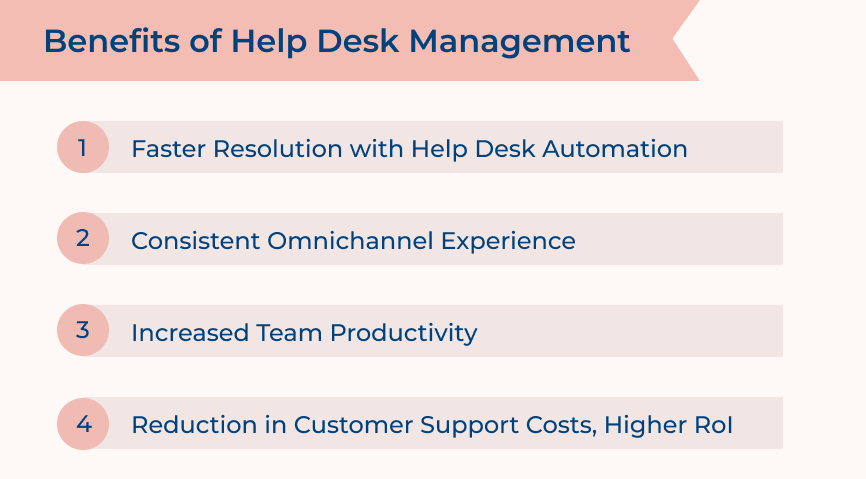
Help desk automation is a powerful tool for businesses seeking to provide fast and efficient service resolution. Automation offers streamlined processes that can be used to respond quickly to customer inquiries, allowing companies to continue operating with minimal disruption.
Automated help desk solutions prioritize scalability, enabling them to manage high volumes of incoming requests while maintaining consistent service quality. Companies guarantee their employees access to the necessary resources for delivering efficient and effective support services.
Providing seamless customer service across all channels is crucial. It ensures a unified approach to customer service through various platforms like phone calls, emails, web chats, and social media. Even though achieving it becomes challenging due to the constant evolution of technology, the benefits are huge and shouldn’t be disregarded.
Offering unified access via mobile app, website, or chatbot increases loyalty among existing customers. It also attracts new ones due to offering superior service levels to competitors who have yet to make such investments into omnichannel experiences.
Team productivity is vital for every organization; optimizing it can make a significant difference. Finding new ways to optimize team productivity has become an art form, with help desk management being one of the most promising avenues for achieving this goal. More than 85% of service teams say a helpdesk system improves their productivity.
The automation of the service desk tools offers organizations tangible returns on investment: shorter resolution times, fewer tickets left unresolved due to lack of attention, and improved communication.
Some may say investing in service desk management may not result in an immediate cost reduction. However, research has proven that the long-term return on investment (ROI) for a help desk can be huge. It streamlines customer support processes and reduces costs for resolving issues quickly.
Tracking customer data and automating responses to frequently asked questions enables companies to reduce their reliance on expensive human resources. It allows them to more effectively allocate those resources towards higher-value tasks, resulting in improved efficiency and productivity across the team.
If you’re ready to elevate your help desk operations, here are the best practices you should consider incorporating into your management approach.
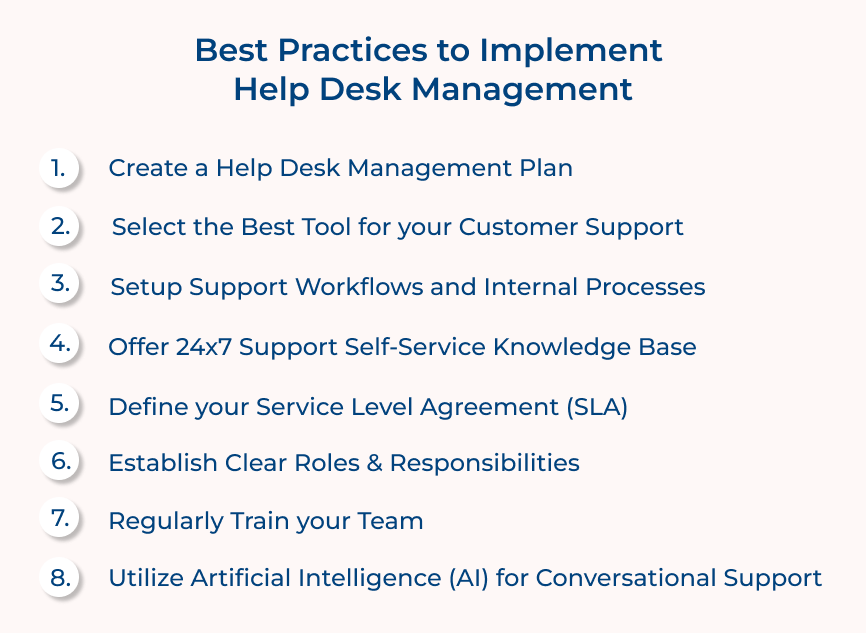
Creating a plan is the foundation for running and managing a successful help desk. It’s almost as if you’re creating an instruction manual on how your help desk should operate, setting clear expectations of success and how it will be achieved.
A well-crafted plan can clarify roles, responsibilities, processes, and measurements, creating an efficient system that helps ensure customer satisfaction. Before assembling your plan, consider what key elements must be included to manage and run your help desk successfully.
Look at what you actually need: how many people, what kind of skills and the tools they’ll use to get the job done right. Make sure everything aligns with how you plan to deliver services and stay compliant with industry rules.
Selecting the best help desk management software to manage is paramount in ensuring success. The selection should be made strategically, with awareness of its features and how it can improve customer service operations. Significantly, sifting through the options available requires careful consideration and analysis.

Researching popular tools that are adept at managing help desks must be undertaken. It will give insight into their advantages as well as shortcomings, thus aiding informed decision-making. Being cognizant of customers’ technology needs is important for choosing appropriate solutions.
Understanding these requirements enables one to identify relevant applications that meet them adequately. Evaluating various software based on user-friendliness is essential in selecting those easily navigable by employees and customers.
Running and managing a successful service management requires precision along with expert execution. Creating an effective workflow and internal processes for your customer support teams can be the key to success. It’s crucial to ensure everyone has clarity of their roles, responsibilities, and expectations within the organization.
Establishing procedures for problem escalation, response time targets, ticket tracking systems, and other important customer service policies can help streamline operations while providing customers with an exceptional experience when interacting with your company.
A clear understanding of each process involved in running a help desk allows everyone to work together more efficiently and effectively by reducing employee confusion while meeting customers’ needs quickly.
A successful help desk must provide customers with 24×7 support and access to a self-service knowledge base. TELCO Ltd, for example, offers its customers the ability to reach out via email or phone and has an online portal packed full of resources to answer common questions quickly.
The exceptional customer service has played a vital role in facilitating trust and loyalty among their clients. It allows for efficient problem-solving processes, reducing wait times and giving customers near-instantaneous resolutions or instructions on how to proceed with a particular issue.
The use of automated technologies, specifically chatbots, is now becoming increasingly popular. Providing customers with instant answers to frequently asked questions through these tools reduces the need for manual interactions while still allowing customers to get quick responses.
Organizations can benefit from having a well-defined service level agreement (SLA) for managing their help desk. SLAs provide clarity to the organization’s expectations around customer support, allowing customers and employees to understand what is expected of them regarding quality.

The process begins with determining the help desk’s scope and any associated thresholds or guarantees that should be included within the SLA. It includes response times, maximum wait times on hold before escalation, availability hours, resolution rates, escalation protocols, and more.
If businesses want to ensure accuracy in setting these parameters, consulting industry standards or third-party surveys regarding typical performance levels for similar organizations may be beneficial. After collecting the information, it must be added to the final document and internally tested before sharing it externally.
Companies must establish clear roles and responsibilities. It allows the team to work more efficiently and deliver better customer support. Everyone on the team can understand their job duties better and how they fit into the overall mission of the help desk.
One can create an effective role structure at the help desk in multiple ways. Create specific roles that outline each person’s unique contribution regarding skills, knowledge, or abilities. Optimize employee performance by assigning tasks according to individual strengths.
Develop policies that set expectations across all levels of employees. It will ensure that every team member has clarity regarding their job requirements and what’s expected from them.
Training is essential to running a successful help desk. It ensures the team has the skills and knowledge to provide customers with effective and efficient technical support. Regular training ensures staff members stay current with new technologies, processes, procedures, and customer service techniques.

There are several methods for providing regular training to the help desk team, such as in-person seminars, online courses or tutorials, reading materials, self-paced study programs, and hands-on practice with real-world scenarios.
The method should be tailored to accommodate each individual’s learning style. Managers can ensure that everyone receives appropriate guidance and instruction by considering different levels of expertise within the team.
AI has quickly gone from an interesting idea to a regular part of our lives. It has made its presence felt in many industries, and the help desk industry is no exception. Customer service is the second largest area for AI in the business landscape after IT. Managing a successful help desk is easier than ever before by providing conversational support for customers.
AI helps run a successful help desk by using natural language processing technology to understand what customers say during conversations. It enables machines to smartly and precisely respond without requiring human involvement.
Automation allows computers to remember customer information so they don’t have to ask questions repeatedly when dealing with them again. AI systems offer instant responses to frequently asked questions, freeing staff members to concentrate on tasks that demand their expertise or involve greater complexity.
Implementing the right help desk management tools allows companies to improve their overall performance and reduce costs associated with customer service operations. It also improves collaboration between agents within departments and provides better visibility into customer inquiries.
Service desk management presents numerous benefits that drive improved customer experiences while offering substantial cost-reduction opportunities. Companies should ensure they place the right resources to leverage these advantages and maximize ROI. With the right approach, businesses can reap several long-term benefits through effective help desk best practices.
The service desk tool is vital in improving customer support by providing a centralized system to efficiently handle customer inquiries, issues, and requests. It enables support agents to track and manage customer tickets effectively, ensuring timely responses. It often includes ticket routing, prioritization, and escalation features, which help streamline the support process. They facilitate knowledge sharing, allowing agents to provide accurate and consistent responses.
Help desk management software can present various challenges. One common challenge is handling a high volume of tickets while maintaining timely responses and resolutions. Balancing resource allocation and managing customer expectations can be demanding. Another challenge is ensuring consistent and accurate communication across support agents. Keeping knowledge bases up to date and accessible can also be a challenge. Integrating the help desk management system with other systems can pose difficulties.
Automation is crucial in service request management tools by streamlining repetitive and time-consuming tasks. It enables the automation of ticket routing, assignment, and escalation based on predefined rules. Automation can also include features like automated ticket categorization, response templates, and notifications, which help expedite support processes and improve efficiency. Make sure to go through the help desk management examples for a better understanding.
Help desk management software offers several ways to improve ticket resolution times. Efficient ticket routing and service request features ensure tickets are directed to the appropriate support agent with the right skills. Automated ticket prioritization helps address urgent issues promptly. Integration with knowledge bases enables quick access to relevant information, enabling agents to resolve tickets faster.

Market better, sell faster and support smarter with Veemo’s Conversation Customer Engagement suite of products.
Unify all your customer data in one platform to deliver contextual responses. Get a 360 degree view of the customer lifecycle without switching tools.
Connect with the tools you love to reduce manual activities and sync your business workflows for a seamless experience.
 https://veemo.io/wp-content/uploads/2024/12/customer-service-response-time.png
1256
2400
indrasish5342@gmail.com
https://veemo.io/wp-content/uploads/2024/11/veemo.svg
indrasish5342@gmail.com2025-10-17 10:51:142025-12-15 05:49:239 Effective Tips to Reduce Customer Service Response Time
https://veemo.io/wp-content/uploads/2024/12/customer-service-response-time.png
1256
2400
indrasish5342@gmail.com
https://veemo.io/wp-content/uploads/2024/11/veemo.svg
indrasish5342@gmail.com2025-10-17 10:51:142025-12-15 05:49:239 Effective Tips to Reduce Customer Service Response Time https://veemo.io/wp-content/uploads/2024/10/How-to-Create-Knowledge-Base.png
1257
2400
Vikas Sachan
https://veemo.io/wp-content/uploads/2024/11/veemo.svg
Vikas Sachan2024-10-21 12:24:342025-12-15 05:58:17How to Create a Knowledge Base in 9 Easy Steps: The Ultimate Guide
https://veemo.io/wp-content/uploads/2024/10/How-to-Create-Knowledge-Base.png
1257
2400
Vikas Sachan
https://veemo.io/wp-content/uploads/2024/11/veemo.svg
Vikas Sachan2024-10-21 12:24:342025-12-15 05:58:17How to Create a Knowledge Base in 9 Easy Steps: The Ultimate Guide https://veemo.io/wp-content/uploads/2024/02/Live-Chat-for-Sales.png
628
1200
Vikas Sachan
https://veemo.io/wp-content/uploads/2024/11/veemo.svg
Vikas Sachan2024-10-21 11:31:222025-12-15 05:58:19How to Use Live Chat for Sales? 7 Proven Ways to Grow Revenue
https://veemo.io/wp-content/uploads/2024/02/Live-Chat-for-Sales.png
628
1200
Vikas Sachan
https://veemo.io/wp-content/uploads/2024/11/veemo.svg
Vikas Sachan2024-10-21 11:31:222025-12-15 05:58:19How to Use Live Chat for Sales? 7 Proven Ways to Grow RevenueGrow Customer Relationships and stronger team collaboration with our range of products across the Conversational Engagement Suite.

 Knowledge Centered Service (KCS): The Ultimate Guide
Scroll to top
Knowledge Centered Service (KCS): The Ultimate Guide
Scroll to top